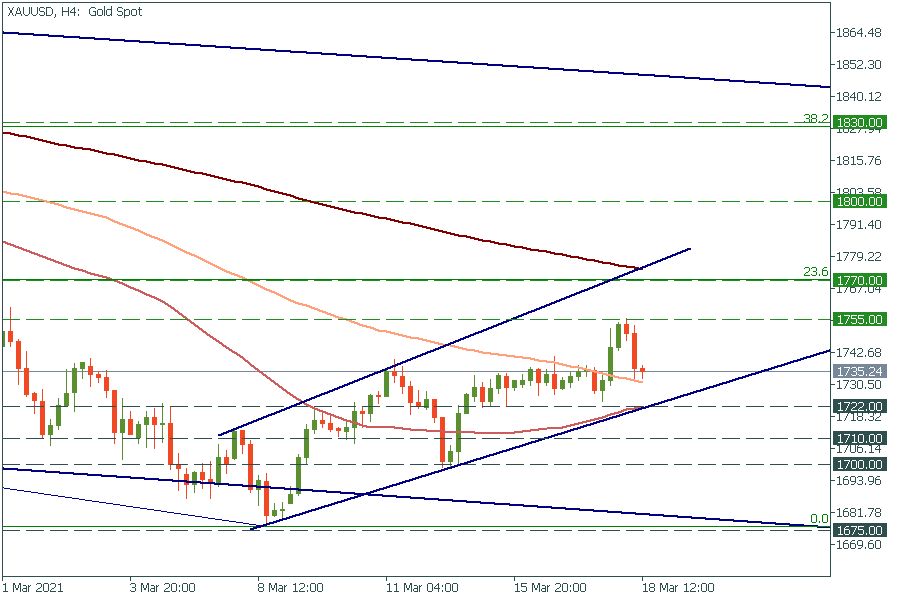Gold jumped after Fed. What's next?
What happened?
Gold prices rose to an over two-week high on Wednesday after the Federal Reserve’s decision. The Fed pledged to keep near-zero rates at least through 2023. Besides, the bank left asset purchases unchanged at $120 billion a month. The decision was made despite inflation worries in financial markets. The Fed raised forecasts for economic growth and the labor market: GDP from 4.2% to 6.5% and unemployment to 4.5% this year.
Why?
Gold has been falling recently because of the rising US Treasury yields. When yields increase, investors tend to favor the USD with higher returns than the non-yielding gold. After the Fed’s meeting, 10-year yields moved higher but were well below intraday highs. It’s known that the higher the inflation, the higher the yields will rise. When the Fed said the inflation rise is temporary, gold bulls priced in. Another explanation is that the Fed’s message triggered the risk-on response, which pressed down the USD. And as we all know, the weakened USD drives gold up.
What’s next?
According to HDFC Securities, gold will move sideways between support $1730 and resistance at $1760. Reuters said that "if the dollar continues its weakening track and yields continue to be calmed by Fed language, then this can set gold up for a test of $1800".
Technical analysis
Long term
The long-term trend is bearish: XAU/USD has been trading in a descending channel since mid-summer of the last year. However, gold has been rising for the last two weeks. If it manages to break above the 23.6% Fibonacci retracement level of $1770, the doors will be open to the 38.2% Fibo level of $1830. On the flip side, the move below the March low of $1700 will drive it to $1675.

Short term
If we look at the 4-hour chart, we’ll notice the price is moving in ascending channel. Thus, it shouldn’t go lower the intersection of the 50-period moving average and the lower trend line of $1722. Thus, we might expect the pullback up soon. Resistance levels are 1755 and 1770.
